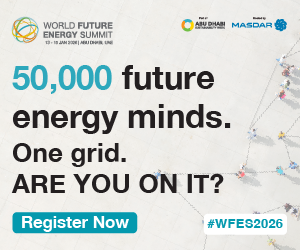Search - Search on Articles, Blogs & Tags
Total Results : 353
Egypt and Japan partner to develop 20 MW solar and storage project
- 2025-12-02 05:53:46
- David Flin
Egypt has announced a new collaboration between the New and Renewable Energy Authority (NREA) and an Egyptian-Japanese consortium to build a combined 20 MW solar power plant and a 30 MWh battery energy storage system (BESS) in Hurghada on Egypt’s Red Sea coast.
G20 Africa Energy Investment Forum urges blended financing to achieve stable grids
- 2025-11-24 07:05:03
- David Flin
During the G20 Africa Energy Investment Forum, African leaders stated that Africa’s path to future-ready energy systems depended on leveraging both fossil fuels and renewables.
Nigeria completes power grid synchronisation with West African network
- 2025-11-10 06:23:45
- David Flin
The Nigerian Independent System Operator (NISO) and the West African Power Pool Information and Coordination Centre (WAPP-ICC) have announced the completion of a synchronisation test between the Nigerian power grid, which includes Niger Republic and parts of Benin and Togo, and the rest of the West African power grid.
Koeberg Nuclear Power Station secures 20-year licence extension
- 2025-11-07 07:06:55
- David Flin
Eskom has announced that South Africa’s National Nuclear Regulator (NNR) has approved a 20-year licence extension for Unit 2 at Koeberg Nuclear Power Station, allowing continued operation until 9 November 2045.
Egypt plans modernisation of key hydropower plants
- 2025-11-03 05:53:02
- David Flin
The Egyptian government is discussing plans to upgrade the country’s major hydropower stations and strengthen the national electricity grid as part of efforts to expand renewable energy generation.
Zimbabwe to give Zambia more water at Kariba
- 2025-10-30 06:23:19
- David Flin
Zimbabwe has agreed to allow Zesco, Zambia’s state power utility, to draw additional water from the Kariba Dam to allow it to sustain electricity generation after the company exhausted its 2025 allocation.
South Africa announces new energy plan
- 2025-10-20 06:16:07
- David Flin
South Africa has announced a new national energy plan, which proposes reviving its stalled SMR nuclear project and expand gas-fired power generation.
Ghana sets target of 10 per cent renewable energy by 2030
- 2025-10-17 06:34:34
- David Flin
Ghana’s Ministry of Energy and Green Transition has announced that it plans to increase Ghana’s renewable energy generation to 10 per cent by 2030 and 50 per cent by 2060.
China to give Nigeria €2 billion loan to rebuild power grid
- 2025-10-08 05:39:01
- David Flin
Nigeria is in advanced negotiations with the Export-Import Bank of China (EximBank) for a €2 billion loan to finance construction of a new transmission network.
Eskom commissions 800 MW of new coal-fired capacity
- 2025-10-02 06:02:53
- David Flin
Eskom, the state-owned electric utility of South Africa, has announced that the final 800 MW unit as the Kusile coal-fired power plant has been commissioned and connected to the national grid.




